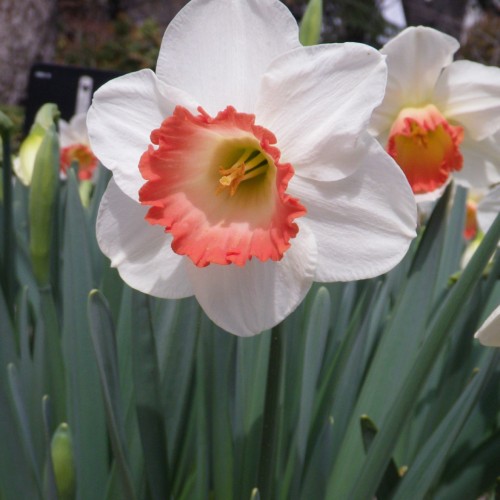
large-cupped daffodil
Narcissus 'Icelandic Pink'
Cycle:
Perennial
Watering:
Average
Hardiness Zone:
3 - 8
Flowers:
Flowers In Spring
Sun:
Full sun,part shade
Leaf:
Yes
Growth Rate:
High
Maintenance:
Low
Care Level:
Medium
watering
The large-cupped daffodil (Narcissus 'Icelandic Pink') is a hardy and drought-tolerant type of daffodil. When watering this plant, it is important not to saturate it with too much water, as this can cause bulb rot. In the spring and summer months, water the plant deeply and thoroughly once per week when the soil is dry to the touch. In the late summer and fall, reduce watering to around once every 2 weeks. In winter months, water only as needed if soil is very dry or the temperatures are unusually warm. It is important not to overwater the plant in the winter, as this can cause the roots to rot. If temperatures remain cold, watering should be completely stopped during the winter months.
sunlight
Large-cupped daffodil (Narcissus 'Icelandic Pink') plants should be grown in full sun to partial shade, with 8-10 hours of direct sun per day. In the morning and late afternoon they should get bright, indirect sunlight. Plants will benefit from relief from the hot afternoon sun during the warmer months. Placing them in an eastern-facing position will give them the best combination of both light and heat.
pruning
Large-cupped daffodils should be pruned immediately after flowering, which occurs in late spring. First, cut off the faded flower heads and give the plants a light trim by snipping off any weak and leggy growth. This will help promote more healthy and polished growth for the next season’s growth. You can prune away any damaged or yellowing foliage. When making your cuts, be sure to use sharp and clean gardening shears, and make a clean cut below the flower head and the surrounding foliage. Rejuvenate the bulbs every few years by cutting back the foliage a few inches lower than before. This will allow the foliage to receive more sun and nutrients, and will help produce larger blooms.
